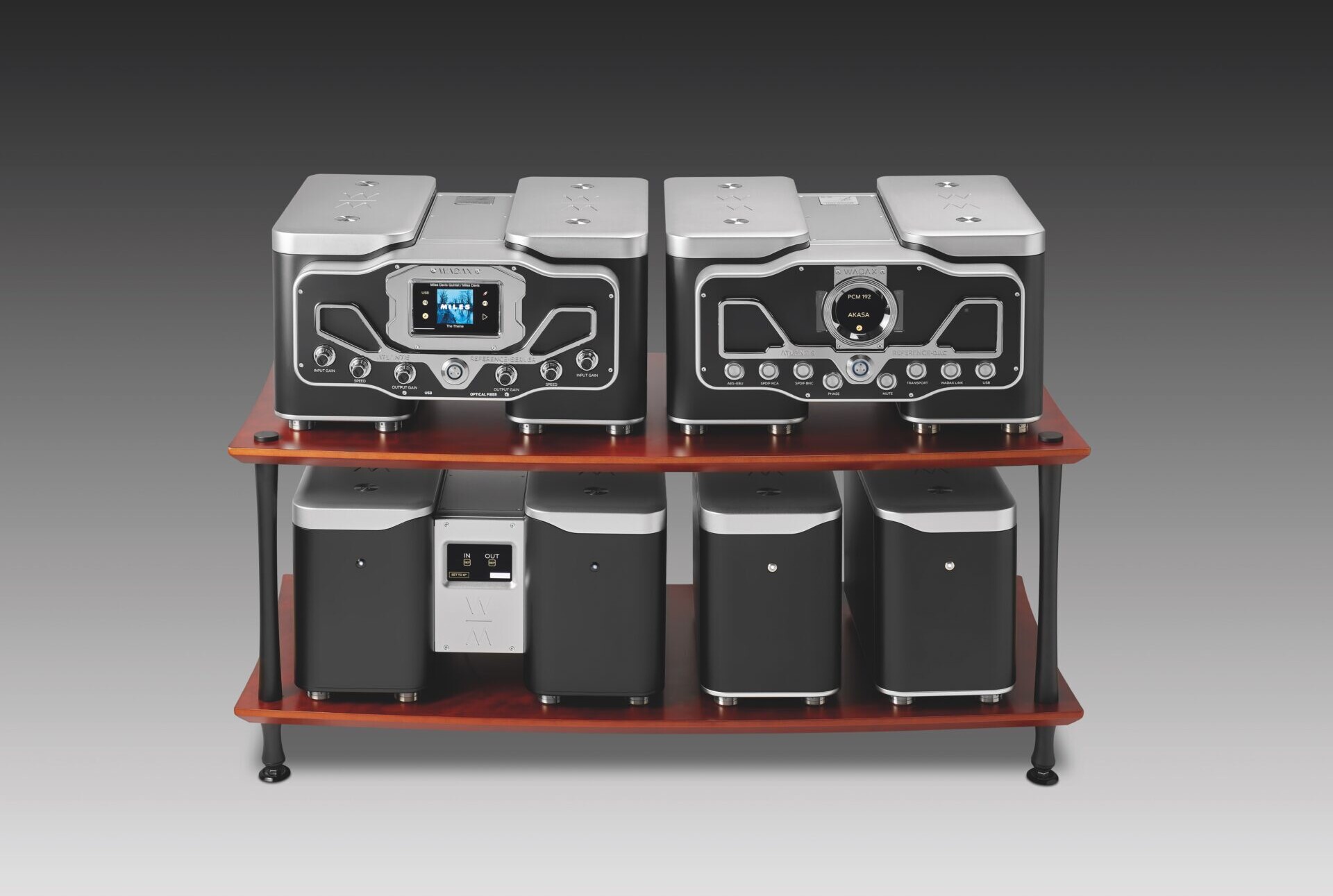Which is all good stuff – but it does raise a question when it comes to the review itself. My original plan was to review the stock Ref Server/Ref DAC combination, followed by a separate review of the Power Supply and DC cables. But such is the increase in performance delivered by the power supply and cable upgrade that I’ve been forced to think again. The stock Wadax Reference set up is seriously pricy: way beyond the means of many who’d doubtless appreciate it’s remarkable performance. Throw in the extra PSU and cables and the cost goes stratospheric. How stratospheric? Prices run like this:
Wadax Reference DAC and twin external power supplies – $157,000 USD
Wadax Reference Server – $64,900 USD
Wadax Reference Power supply – $49,000 USD
Wadax Akasa Reference Optical Interfaces and connection – $19,240 USD
Wadax Akasa Reference DC leads – $19,800 USD (1m) ea.
You’ll need two DC cables for the Ref DAC and another for the Ref Power Supply (Standard DC leads are also available, at $1,200 ea.)
So, given that the product is all but unaffordable, what’s the point of the review? Simple – not only are there those who can afford and do enjoy these product, it’s also an exercise in understanding just what is possible. We use the term state-of-the-art with reckless abandon, but if for a change we pause and apply it more precisely, that’s exactly what we have here: a product that defines both what is currently possible and where more affordable options might ultimately follow. The wider industry has rushed to embrace streamed music and file replay, rarely stopping to question the dogma that goes with it. The Wadax Reference components represent a timely reality check: a gauge as to what IS possible and just what it takes to achieve it. With that in mind, I decided to reverse the review sequence. What I’m going to describe here is the full-system performance – the Reference Server and its matching Power supply, the Reference DAC and a full suite of Akasa Reference Optical and Reference DC cables. To that extent it’s a one-time deal – which also neatly sidesteps the issue of all the different upgrade options, cable combinations etc. Instead, this review will concentrate on just how far the Wadax takes us. A subsequent piece will trace the upgrade path for existing owners wanting to get there…
 But first, there’s one exception to my ‘straight to the top’ policy and that’s to do with the Akasa optical interconnect, not least because it impacts anybody considering using a Reference Server without the Wadax Reference DAC. After all, although this has morphed into a digital system review, it is also still a Reference Server review and needs to cover that product’s nuts and bolts. The first question confronting the potential Reference Server user is the choice between USB and the Akasa optical interface. Of course, Akasa only becomes an option if you will be using the Wadax Reference DAC, the sole unit currently equipped with the necessary interface. It also looks at first glance like a seriously expensive option too, although in reality, things ain’t always what they seem. I used the Ref Server’s USB output to feed a range of different USB inputs, including those on the CH Precision C1.2, Levinson 585 and the Wadax Ref DAC itself. However, for USB/Akasa comparisons, it was always and could only be the Ref DAC. I also assembled a variety of USB leads, from Nordost (the V2 and Heimdall), Crystal (the Absolute Dream) and AudioQuest, amongst others. The first and most obvious thing to say is that all of these cables sounded distinctly different to each other, from the warm and slightly woolly AQs to the sweet but bandwidth and dynamically limited Crystal. However, perhaps not surprisingly given that the rest of the system was Nordost wired, it was the V2 that stood head and shoulders above the others, with an even, well-balanced sound that was long on clarity, weight and musical presence.
But first, there’s one exception to my ‘straight to the top’ policy and that’s to do with the Akasa optical interconnect, not least because it impacts anybody considering using a Reference Server without the Wadax Reference DAC. After all, although this has morphed into a digital system review, it is also still a Reference Server review and needs to cover that product’s nuts and bolts. The first question confronting the potential Reference Server user is the choice between USB and the Akasa optical interface. Of course, Akasa only becomes an option if you will be using the Wadax Reference DAC, the sole unit currently equipped with the necessary interface. It also looks at first glance like a seriously expensive option too, although in reality, things ain’t always what they seem. I used the Ref Server’s USB output to feed a range of different USB inputs, including those on the CH Precision C1.2, Levinson 585 and the Wadax Ref DAC itself. However, for USB/Akasa comparisons, it was always and could only be the Ref DAC. I also assembled a variety of USB leads, from Nordost (the V2 and Heimdall), Crystal (the Absolute Dream) and AudioQuest, amongst others. The first and most obvious thing to say is that all of these cables sounded distinctly different to each other, from the warm and slightly woolly AQs to the sweet but bandwidth and dynamically limited Crystal. However, perhaps not surprisingly given that the rest of the system was Nordost wired, it was the V2 that stood head and shoulders above the others, with an even, well-balanced sound that was long on clarity, weight and musical presence.

